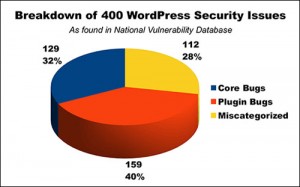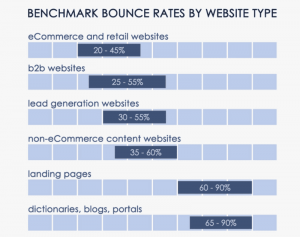— June 27, 2017
My mom hated modern art, but she was a good mom and dutifully went with me to look at some of my favorite pieces. As we stood in front of one of Jackson Pollock’s massive drip paintings, she complained that she didn’t see what was so special about the work. “I could do that,” she said. “I could splatter paint across that canvas.”
And she had a point. She could have re-created a Pollock if she’d wanted to.
Years later, I realized something. Of course, my mom could have created a drip painting like Pollock – she’s seen it before. But that’s the thing, when Pollock created it, the artists before him were working representationally. He broke away from accepted conventions in both technique and subject matter, and he created something new. That’s why his work is so important.

RonBerg / Pixabay
I gave a talk a few years ago, and I started with that story. I encouraged the content strategists and copywriters in the group to quit copying everyone and make something new. This blog post was supposed to be inspired by that talk. However, something happened. My perspective changed, and I no longer believe that ideas have to be completely new to be worthy of a museum’s walls.
How I Changed My Mind About the Basic Premise of this Post
In a meeting a few weeks ago, my boss commented that in this internet age there are no original ideas. There is always someone who has tried it before, at least in some form, and it is a strategist’s job to observe those examples and use them as inspiration.
Well, heck, I thought. I was supposed to write a blog post that argued the opposite.
I reached out to a select group of creative friends – people I find truly inspirational in their unique approaches to their work – and I asked them how they creatively came up with things that are original. And we discussed it: Is it possible to create something entirely new? Or are the best ideas just ones that are repurposed from elsewhere?
And I changed my mind. Possibly, the best ideas exist when old ideas are explored in new context. When creators are not limited by a compulsion to “create something new,” but can just try a new way of doing something old. After all, Pollock created something radically new, but he didn’t do it in a vacuum. He had lots of things to inspire him, from European modernism to Jungian psychology, the Great Depression, and World War II.
I’m not saying that it’s okay to write another version of a blog post on a topic that appears on dozens of other sites. And I’m definitely not saying that it’s okay to copy another’s work verbatim.
What I’m saying is this: Strategists should make new things by drawing inspiration from the world around them.
How to Draw Content Inspiration from the World Around You
So how should you do it? As a content creator, how can you create content ideas by drawing inspiration from the world around you? Here are my thoughts:
- Meet the people who will be reading your work: Draw inspiration from website users. Talk to people who use your website or buy your products. Ask them what their questions and concerns are. Conduct informal focus groups to gain content insights. Read exchanges in online forums. See what’s happening on social media.
- Tune-in to the industry: Projects with deadlines can push personal development time to the side, but it’s important to fight back. If you don’t, you are always giving ideas and never replenishing yourself creatively. Subscribe to content strategy, inbound marketing, and SEO blogs and make time to read them. I created an email folder for mine. It’s also possible to use apps like Pocket, which let you bookmark articles for later. Just make sure that “later” actually comes.
- Keep up with what others are doing: Keep tabs on what your competitors are doing. See what ideas they’re implementing, what seems to be working for them and what doesn’t. Look at the best web ideas from other industries, as well. Taking ideas from one industry and applying them to another is at the heart of what I’m talking about.
- Be okay with being curious: I’ve often felt guilty about allowing myself to go down a Wikipedia rabbit hole or dedicating time to geeking out on my favorite blog, just because I like it. But I’ve decided to let myself be curious about more things – even if they don’t seem to have a purpose at the time. That time isn’t a waste. It’s critical to being inspired.
In Conclusion
I spent a lot of time thinking that the most valuable ideas were ones that were completely new, but that’s not necessarily the case. Even ideas that seem new are inspired by older ideas. Often, they are the same ideas in a different context.
I’m not so sure that “new” is what’s important. In fact, it can even be limiting. What if I didn’t create content just because I didn’t want to write anything that had been written before? Maybe what’s important is continued creativity – trying new things that resonate with users, that feel important to you, or that take existing ideas to the next level.
Business & Finance Articles on Business 2 Community
(72)






